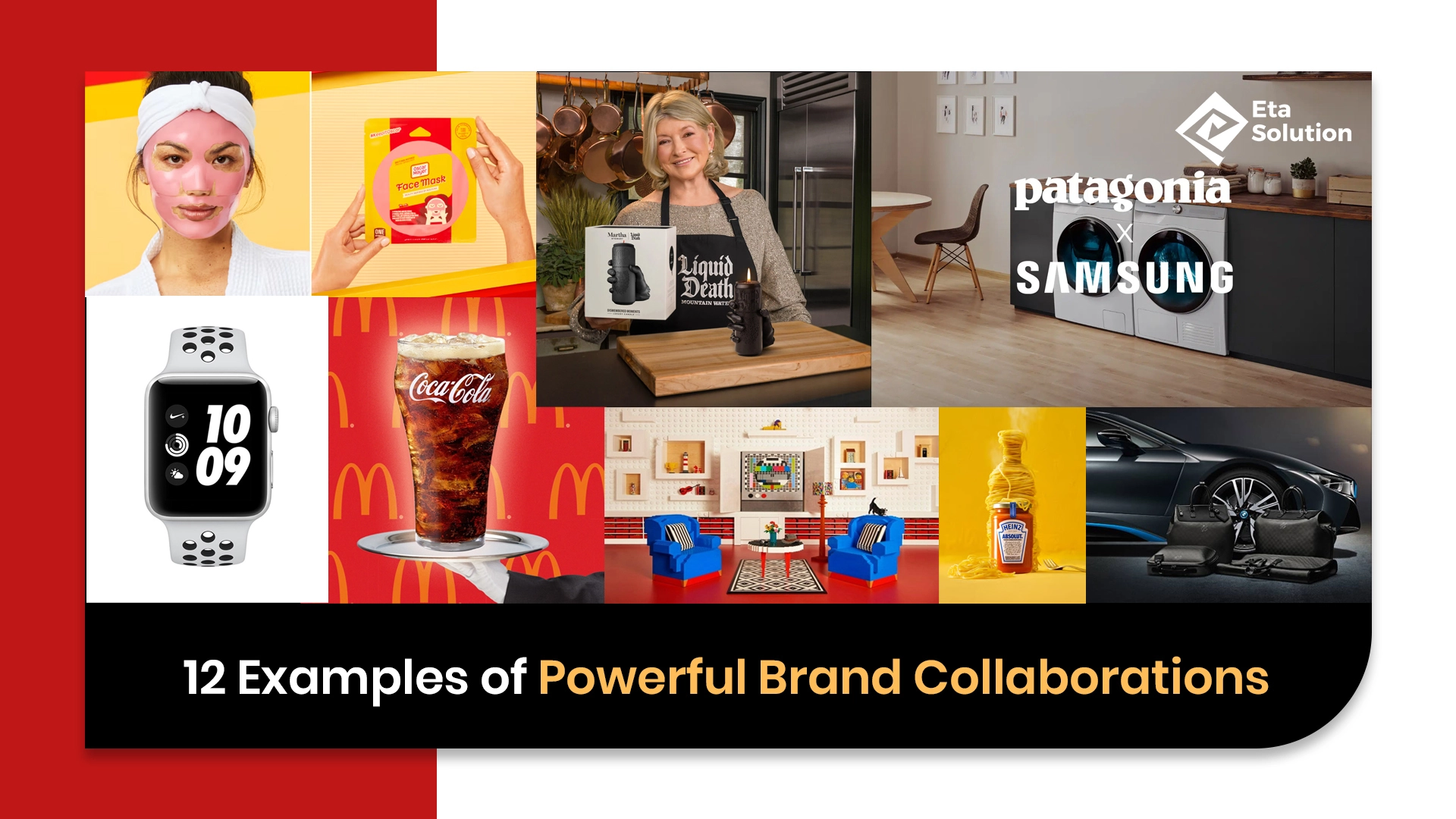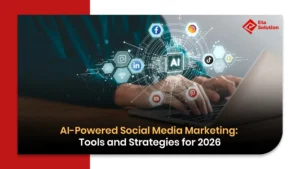
12 Examples of Powerful and Famous Brand Collaborations
If two brands that could easily ignore each other decide instead to join forces. The result? An idea, a product, or an experience that one brand was not able to provide alone. This is the core of successful brand partnerships, those that are not forced, but rather seem to be a natural fit.
In a world where most campaigns are done individually, the clever ones are opting for marketing collaborations that ignite. You’ll find tales here of unexpected brand alliance marketing and lessons that you can borrow for your brand’s next move.
Why brand collaborations matter now more than ever
- Brand collaboration strategy in 2025, data shows that 69% of marketers believe influencer-led or partner-led campaigns are more effective than brand-only messages.
- Trend shift: According to recent research, what was once the domain of high-fashion or big FMCG brands has become a strategy used by niche and smaller players alike.
- Audience expansion & cultural relevance: One analysis found that the smartest joint venture branding efforts tapped into both partner audiences AND culture to create lasting impact.
As a firm positioning itself as the top digital marketing agency in India, your role is to spot those opportunities where your client’s brand can plug into this trend, not just follow it, but lead it.
12 Real-Life Campaigns You Can Learn From
Here are twelve standout case studies on brand collaborations examples that show different angles of joint work. I’ll draw out the strategic “so what” for each.
1. Louis Vuitton × Takashi Murakami
Luxury meets pop art. LV and Murakami revived their classic multicoloured monogram, bringing it back for 2025 with resonant story and buzz.
A brand with heritage leverages nostalgia and an artistic name to maintain relevance. For your clients: legacy + trend = gold.
2. Adidas × Allbirds – “Lowest Carbon Footprint Shoe”
Sporting giant Adidas and eco-brand Allbirds teamed up to create a running shoe whose carbon footprint was under 3 kg CO₂ per pair, while the industry average runs 10-15kg.
Two different brands merged their strengths for a greater purpose. When you’re helping a client, ask: Who has complementary assets?
3. Kith × Coca‑Cola
A streetwear label meets an iconic beverage. The crossover taps nostalgia and culture.
Unexpected pairings catch attention. If you can make two worlds meet genuinely, you win.
4. Skims
Skims (Kim Kardashian’s brand) in 2025 partnered with celebrities and sports organisations to expand reach and cultural relevance.
Influence goes beyond celebrity; it’s context + alignment. When you pitch influencer brand partnerships for a client, it has to fit not just image but ecosystem.
5. Minute Maid × WWE – “Bring the Juice” campaign
Juice brand meets entertainment-sport giant. By aligning with WWE’s energy, Minute Maid repositioned itself among younger audiences.
If your client needs to ‘show up’ in a new zone, pick a partner whose arena already connects with them.
6. Bonds × Robert Irwin – “Made for Down Under”
An Australian underwear brand introduces eco-friendly materials, using Robert Irwin’s conservation advocacy for authenticity.
When a brand partnership aligns values, you get emotional resonance. For marketing agencies: encourage a value lens.
7. Samsonite × various artists
In 2025, Samsonite teamed with visual artist Vexx for limited-edition luggage, blending functionality + art.
Product-driven co-branding campaigns work well when the end product is collectible, limited, or emotionally charged.
8. Supreme – unconventional brand collaborations
Supreme’s long history of partnering with unusual brands and artists shows that even streetwear thrives on strategic celebrity brand partnerships.
This shows that the value isn’t always about the product but about culture, identity, and scarcity.
9. Pinterest × Chamberlain Coffee – communications-led creator collab
Pinterest’s first physical product collaboration with Chamberlain Coffee was driven by the communications team, not the typical partnership marketing ideas. It generated ~1,500 press mentions in the first week.
Collaboration doesn’t always have to be product-centric; sometimes it’s story, culture, creator, and comms innovation.
10. Weird pairings: e.g., Kate Spade × Heinz or Chipotle dorm collection with Urban Outfitters
These crossover examples are “weirder” but show that novelty is currency.
If you’re working for a bold client, suggesting a “shock-and-awe” pairing might pay off, but only if authenticity holds up.
11. Influence + brand: Influencer brand partnerships evidence
“Content generated by influencers yields $5.20 for every $1 spent”, according to one survey in 2025.
In the umbrella of brand collaborations, don’t ignore the “influencer” dimension – it’s part of cross promotion examples and joint reach.
12. Strategic brand collaboration trends for 2025
The trend guide identifies:
- Collaboration is democratizing not just for big brands.
- Purpose-led partnerships are gaining weight.
- Drop culture + limited editions = hype + scarcity.
If your client is a smaller brand or in India, they don’t need to outspend the big guys; they can out-think them by choosing the right partner and narrative.
How to make it work for your client
You can guide your client through a structure I call the 3-P Model.
- Partner: Choose a brand with complementary assets, audience, or culture, not simply bigger.
- Purpose: Define a meaningful co-brand objective: product, experience, story. If it feels like “we just slapped logos together”, it won’t land.
- Performance: Set measurable KPIs. For example: “Increase brand consideration among 18-35 year olds by 20%”, or “Generate X million social impressions from the drop”.
When you draft a proposal for clients as the top digital marketing agency in India, show them this framework and align their operations accordingly.
A few lesser-known facts & expert viewpoint
- Many brands underestimate the operational complexity of co-branding. According to a fashion case study, one misstep is picking a partner without aligned supply chains or brand workflows.
- Experts say mismatch is the biggest risk. One piece notes: “The more unconventional the pairing, the greater the risk of credibility loss among Gen Z if authenticity fails.”
- Bonus stat: In one report, brands that used creator/influencer collaborations in 2025 found, on average, a 4x higher engagement than standard brand-only campaigns.
- Trend alert: More communications-led collaborations are emerging.
So when you advise clients, help them navigate not just the “fun idea” but also the “will this scale and deliver” dimension.
Wrapping up:
Thinking like a top digital marketing agency in India, here are the practical steps you can pass on to your clients:
- Audit: What brand assets and audience do they have? Where is the partner-fit?
- Define the purpose: Is it product innovation? Cultural relevance? Audience expansion?
- Draft partner shortlist: Select 2-3 brands whose strengths do not overlap, have similar values, and cross-reach.
- Example KPIs: Audience, share of voice, brand perception, conversions.
- Read the operations: Legal, supply, comms, and exit planning.
- Introduce & evaluate: Monitor and openly disseminate learnings for trust and narrative movement after the debut.
If your agency can master this, your clients won’t just run “brand collaborations,” they’ll run smart brand collaborations.
Final Take
Brand collaborations used to be creative stunts that brands could choose whether to do or not; however, now they have become one of the main strategic levers. The brands that win are the ones that recognize themselves not as independent entities but as co-creators in a big ecosystem, be it through creative co-marketing ideas or deep strategic brand partnerships. It is your job to help brands figure out the partner, the purpose, and the performance.
If you’re positioning yourself as a Top digital marketing agency in India, you must bring this level of complexity and opportunity to the table, not just “let’s do a partnership”.
What if the next collaboration you propose becomes the industry case study everyone quotes in 2026?
Typical formats include co-branded products (limited-edition goods), social media campaigns (content swaps, takeovers), influencer or creator partnerships, event tie-ins (sponsored stages or pop-ups), and content collaborations (podcasts, video series). Hybrid models — such as a product drop promoted by an integrated social and retail activation — are increasingly common because they drive both awareness and conversions.
Fashion, beauty, food & beverage, and entertainment lead because limited editions and lifestyle storytelling work well in those verticals. Tech and automotive brands also collaborate (with designers, artists, or lifestyle brands) to humanize their messaging. However, collaboration tactics apply across industries — B2B brands can co-produce research reports, webinars, or tool integrations for similar effects.
They create fresh content, extend reach into new audience segments, and often improve conversion because the message comes with third-party validation. Collaborations also generate multiple content assets (co-created videos, images, blog posts) that fuel paid and organic channels, improving ad efficiency and reducing creative fatigue. Cross-promotions can also drive backlinks and SEO benefits when partners link to campaign pages.
Start by mapping audience overlap and complementary strengths — a partner should bring reach or capability you don’t have. Check brand values, tone, and reputation so the partnership feels believable to both audiences. Assess practical fit: logistics, budget, legal readiness, and previous collaboration performance. Run a small pilot or campaign test when in doubt.
Risks include audience mismatch (which can confuse or alienate customers), diluted brand identity, and legal or operational issues (IP disputes, fulfillment bottlenecks). Poorly executed collaborations can lead to negative PR if expectations aren’t managed. Mitigate risk with a written agreement covering roles, approvals, timelines, quality standards, and exit terms — and always run a small pilot if uncertainty is high.

What started as a passion for marketing years ago turned into a purposeful journey of helping businesses communicate in a way that truly connects. I’m Heta Dave, the Founder & CEO of Eta Marketing Solution! With a sharp focus on strategy and human-first marketing, I closely work with brands to help them stand out of the crowd and create something that lasts, not just in visibility, but in impact!

Industrial Product Marketing with LinkedIn & Paid Ads

Top Digital Marketing Strategies for Industrial Products in 2026

B2B Product Launch Strategies: From Pre-Launch to Go-To-Market

